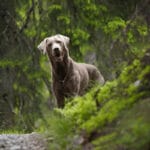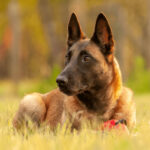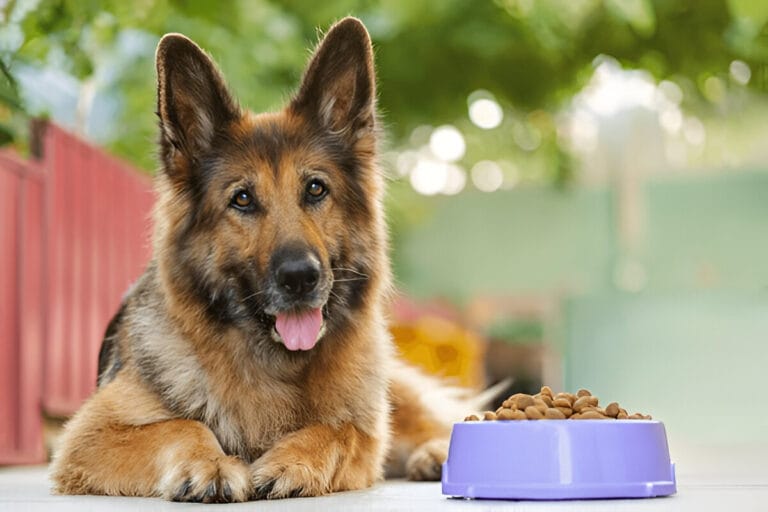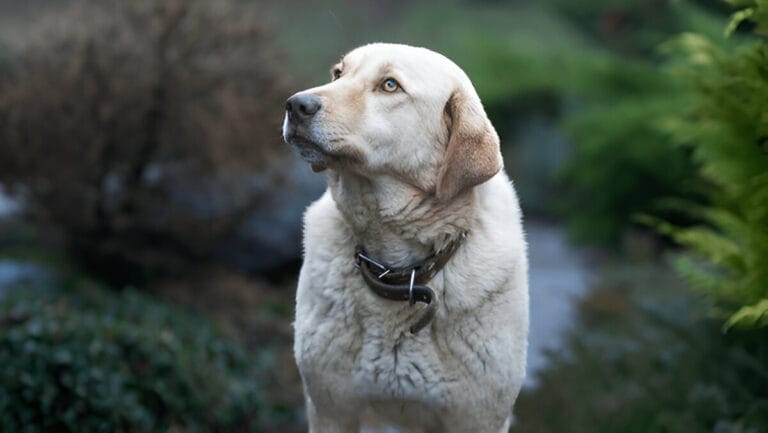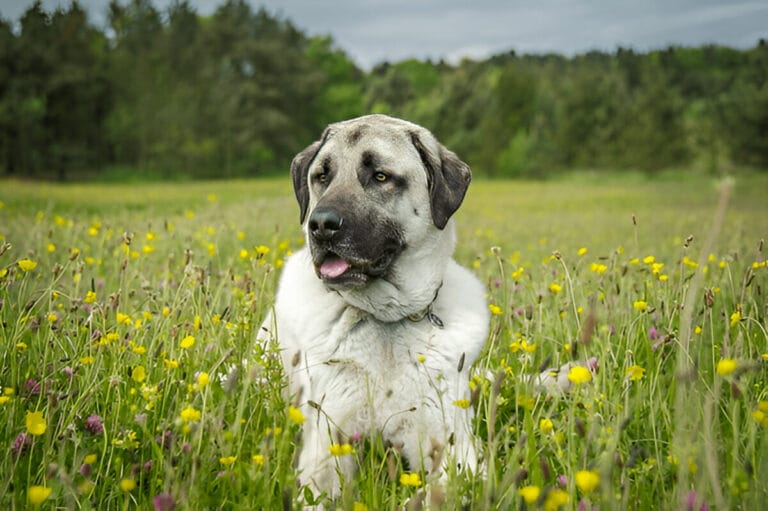Labrador Retriever: America’s Beloved Companion
The sweet-faced, lovable Labrador Retriever has earned its place as America’s most popular dog among all breeds year after year, and honestly, after spending countless hours with these remarkable dogs at training facilities and in homes, I can see why Labs are the incredibly friendly, outgoing, high-spirited companions with more than enough affection to go around any family looking for a four-legged addition.
These medium-to-large, sturdy, well-balanced dogs can, depending on sex, stand 21.5 to 24.5 inches at the shoulder and weigh between 55 to 80 pounds, with their dense, hard coat that comes in yellow, black, or that luscious chocolate shade that melts hearts everywhere.
What strikes me most about Labs is their expressive head with its wide eyes that glimmer with kindliness and their distinctive thick, tapering otter tail that seems forever in motion, signaling the breed’s innate eagerness to please and participate in whatever adventure awaits.
These dogs are famously companionable housemates who bond with the whole family and socialize well with neighbor dogs and humans alike – I’ve watched them transform from puppies into gentle giants who seem to read their owner’s moods perfectly.
However, don’t mistake their easygoing personality for low energy – the Lab is an enthusiastic athlete that requires lots of exercise, whether it’s swimming laps at the lake, marathon games of fetch in the backyard, or structured activities to keep them physically and mentally fit.
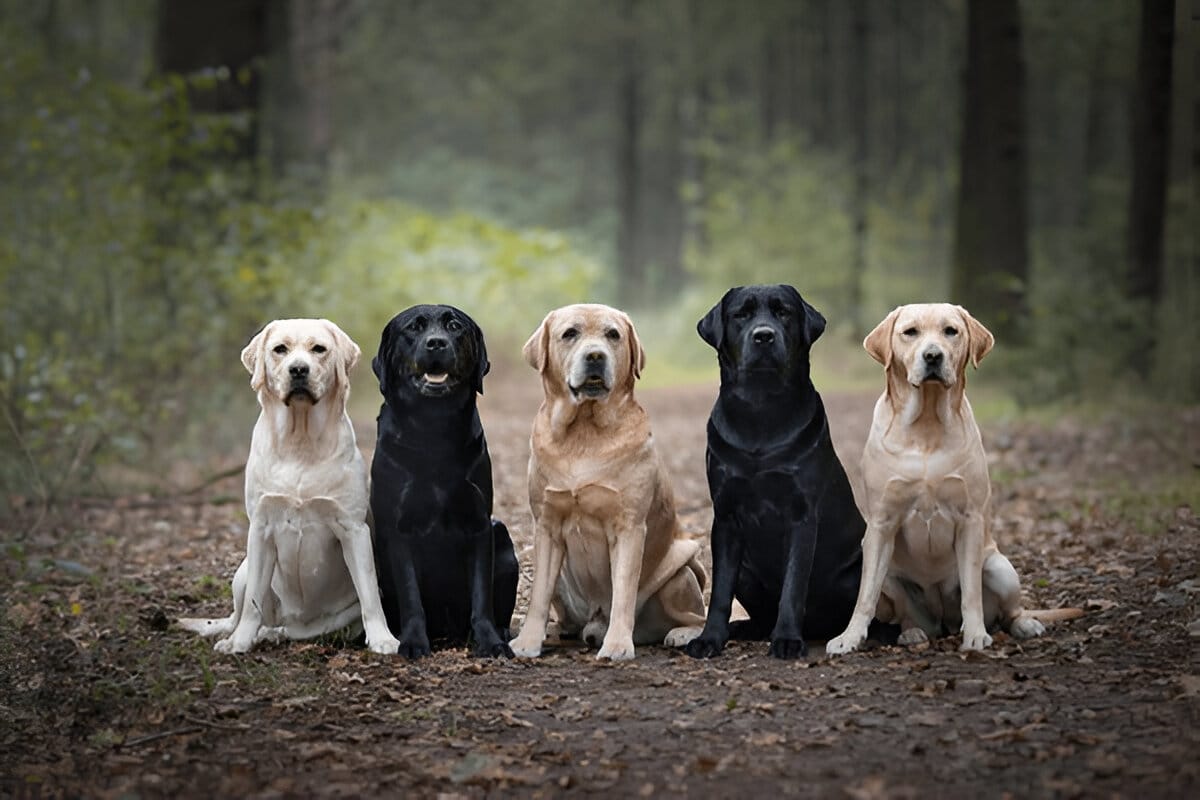
Photo credit: Shutterstock by MirasWonderland
History and Origins
The Labrador Retriever story begins as a traditional waterdog from Newfoundland, where these remarkable dogs were long employed as both duck retrievers and fishermen’s mate along the rugged coast during the 17th century.
Having studied historical breeding records extensively, I’ve always been fascinated by how the breed began its steady climb in popularity during the early 1800s when Labs were spotted by English nobles visiting Canada for sporting adventures – these earls and lords returned to England with fine specimens of these exceptional dogs.
While exactly how they became associated with the Labrador region remains unclear, the name certainly stuck, and during the latter half of the 19th century, British breeders methodically refined and standardized the physical and temperamental traits we’re familiar with today among millions of devotees around the world.
When I recall the Lab’s original purpose, their short, dense, weather-resistant coat was preferred because harsh Canadian winter conditions left longhaired retrievers encrusted with ice after coming out of the water – their ancestral homeland assigned them to fishing boat duty where they would retrieve fish that came loose from the trawl, and accordingly, in addition to having natural instincts, each dog required traits perfectly suited to the icy waters of the North Atlantic.
Their thick, tapering tail – often called an “otter” tail – serves as a powerful rudder, constantly moving back and forth as the dog swims and aids in turning, while the breed’s characteristic temperament remains much a hallmark as their ideal disposition – that kindly, outgoing, tractable nature with an eager to please, nonaggressive attitude towards both man and animal that the standard says appeals to people through their gentle ways, intelligence, and adaptability that make up the defining and primary attributes.
The most important trait might be temperament since their utility depends on what one early expert noted: if a Lab “does not possess true Labrador Retriever character,” as wrote a noted judge, it loses its essence – the Kennel Club recognized the breed in 1903, the AKC registered their first Lab in 1917, and after they topped registrations in 1991, they’ve reigned as America’s favorite for 31 straight years.
These dogs originated along Newfoundland’s coast where fishermen trained them to bring in fishing-nets through rough seas, and when fishermen brought them to Poole Harbour in Great Britain, their attractive and appealing personalities drew umpteen offers from Englishmen wanting to buy them – their exceptional working abilities made them instantly successful as a gundog, particularly catching the attention of the Earl of Malmesbury who became fascinated with these dogs known as Saint John’s Dogs and started breeding them while calling them Labradors, a name still used today as they serve as gundogs as well as being beloved family pets.
Meet the Labrador
Labrador Retriever Appearance
Labrador Retriever are large, strongly built dogs with good bone and substance that immediately catch your attention – their heads are distinctively broad with those unmistakable soft, intelligent looking eyes that serve as perfect indicators of their friendliness and generally easy-going nature, while their tails, often described as being otter-like, remain strong and almost constantly wagging with enthusiasm that’s infectious to anyone around them.
Having evaluated hundreds of Labs over the years, I’ve noticed how Labrador Retriever colors vary beautifully between black, yellow, and chocolate, with some sporting different shades and hues within each color category that make each dog uniquely stunning while maintaining that classic Lab appearance that’s instantly recognizable whether they’re working in the field or lounging at home as beloved family companions.
Labrador Retriever personality
The Labrador Retriever is an active, friendly, loving dog that absolutely thrives on human companionship, wanting nothing more than to please their owners – except perhaps to eat anything and everything they can find or jump into any body of water that crosses their path, making them ideal pets for households with children who get along well with other household animals.
From my years of working with these remarkable dogs, I’ve observed that Labradors are a very happy breed that remains extremely affectionate with constantly wagging tails that always seem ready to go on the next adventure, and they are easily trained due to being eager to learn and willing to turn on the charm at just about any moment – they are total foodies, however, which certainly helps with training but not with their waistlines if you’re not careful with portion control.
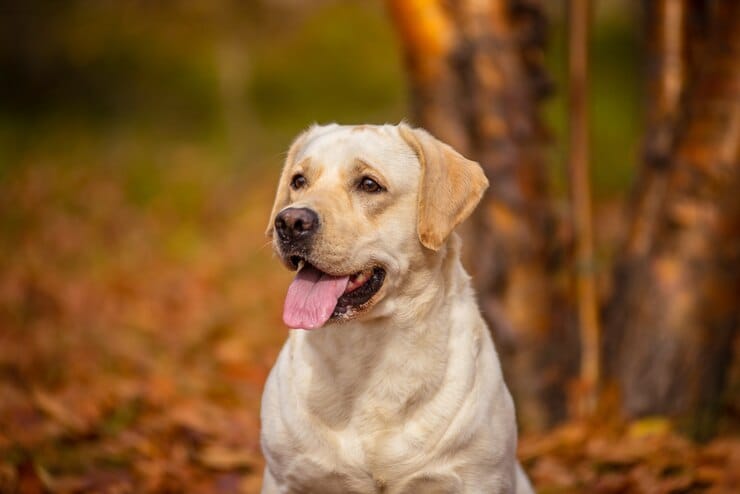
Photo credit: Freepik by evgeniyashihaleeva
What To Expect When Caring For a Labrador Retriever
Vet Rating
From my veterinary experience, Labrador Retrievers score exceptionally high in Family-friendly ratings and Easy to train categories, while their Exercise needs and Energy level both rank at maximum levels, they score a 2 for Tolerates being alone (meaning they need companionship), they absolutely Likes other pets, and their Grooming requirements are moderate though Shedding rates a 4 out of 5, making them wonderful family companions that require active owners willing to manage their high energy and seasonal coat blow-outs.
Health
Labs are generally healthy dogs overall when you work with a responsible breeder who screens their breeding stock for conditions such as elbow and hip dysplasia, heart disorders, hereditary myopathy (a muscle weakness issue), and eye problems including progressive retinal atrophy, plus a condition called exercise induced collapse (EIC) that can occur in some young adult Labs during intense activity – fortunately, DNA test options allows breeders to identify carriers and plan breedings to avoid producing dogs with these issues.
From my clinical experience, I always remind owners that like other large, deep-chested breeds, Labs can develop the life-threatening stomach bloat condition, so owners should educate themselves about the symptoms that indicate this emergency is occurring and know what to do if it happens, while also ensuring their breeder has completed essential screenings including Hip Evaluation, Elbow assessment, Ophthalmologist examination, D Locus Dilute Test, Centronuclear Myopathy (CNM) screening, Progressive Retinal Atrophy PRCD (PRA-prcd) testing, and Exercise-Induced Collapse evaluation so you can confidently welcome a healthy puppy into your family.
Grooming Labrador
The Labrador Retriever has a thick, water-repellant double coat that naturally sheds, so you’ll want to give them occasional baths to keep them clean, and like all breeds, your Lab’s nails should be trimmed regularly while teeth need to be brushed frequently for optimal health.
From my hands-on experience with countless Labs, the Labrador grooming process is fairly easy since their coats are simple to maintain even though the size of these large dogs means dealing with a dense, weather-resistant undercoat that can be easily kept manageable if you brush through it once a week – though expect more regular attention when moulting season arrives, and since they do love water and mud, you may need to watch out for grass seeds during summer months as these active dogs tend to charge around the countryside with enthusiastic abandon.
Exercise Needs
The Labrador Retriever is an exuberant, very energetic breed that needs lots of exercise every day – a Lab who doesn’t get enough physical activity is likely to engage in hyperactive and destructive behavior as they try to release their pent-up energy, and from my experience training these amazing dogs, the breed’s favorite activities include retrieving and swimming since Labs also love to burn up energy on hunting trips, field trials, as well as participating in canine sports such as agility, obedience, tracking, and dock diving.
Many Labs work hard in important roles like search-and-rescue, drug and bomb detection, plus service and assistance dogs, proving their incredible versatility and work ethic.
Labradors will adapt to the amount of time you can allocate to their exercise routine, as long as they are kept active – ideally requiring a couple of hours of being physically engaged each day for a good, healthy adult, including walks and the chance to run and play off lead in safe areas, though unfortunately many Labs become overweight because they’re often bought by families who want them based on their reputation as the perfect dog for children without realising that this is a working breed requiring a lot of training to stay happy.
These dogs absolutely revel in interactive games with their owner and are highly social animals that need to be involved in all family activities to truly thrive both mentally and physically.
Space Requirements
The Labrador Retriever is a large, active breed who at heart is a country dog, so they needs good-sized living space that matches both the size of their physical frame and energy levels – since high activity dogs like Labs will truly appreciate having a garden and need regular access to the great outdoors for long walks to stay mentally and physically satisfied.
Training Labrador Retriever
Given the Labrador Retriever impressive physical strength and high energy level, early socialization and puppy training classes are absolutely vital for gently exposing them to a wide variety of people, places, and situations between the ages of 7 weeks to 4 months, while beginning obedience work will help him develop into a well-adjusted, well-mannered adult and serve as part of the process where the owner can learn to recognize and correct any bad habits that may be developing.
From my years working with these remarkable dogs, I’ve found that Labs are devoted, intelligent, enthusiastic companions who need to be included in family activities to truly thrive, and Labradors are generally a joy to train since they are both clever and biddable dogs that love working with their owners.
Despite being relatively unproblematic compared to other breeds, Labs do still have active minds that require work to keep their busy brains occupied, plus they can easily get overly-boisterous or even destructive if not given plenty of exercise and mental outlet for their hard-wired breed behaviours like retrieving – it’s especially important to teach them proper manners using positive, reward-based methods so they’ll happily give up prizes they find and might otherwise want to hold onto of their own accord.
Nutrition and Feeding
The Labrador Retriever should do well on high-quality dog food, whether commercially manufactured or home-prepared with your veterinarian’s supervision and approval – any diet must be appropriate to the dog’s age (whether puppy, adult, or senior), and since some dogs are prone to getting overweight, so watch their calorie consumption and weight level carefully.
Treats can be an important aid in training, but giving too many will cause obesity, so learn about which human foods are safe and which are not, and check with your vet if you have any concerns about diet while ensuring clean, fresh water is available at all times.
Since Labs are a large breed having hearty appetites, they benefit from a different balance of nutrients including minerals and vitamins compared to smaller-breed dogs, and because of potential bloating and stomach problems, smaller, more frequent meals can help minimize this risk – your Lab needs the right main nutrient groups in constant supply, and it’s important to conduct regular body condition scores to ensure you keep them in ideal shape.
From my veterinary experience, remember to feed them at least twice daily in accordance with feeding guidelines for their particular size and activity level, as proper nutrition along with quality care can contribute to a lifespan reaching 14 years or more.
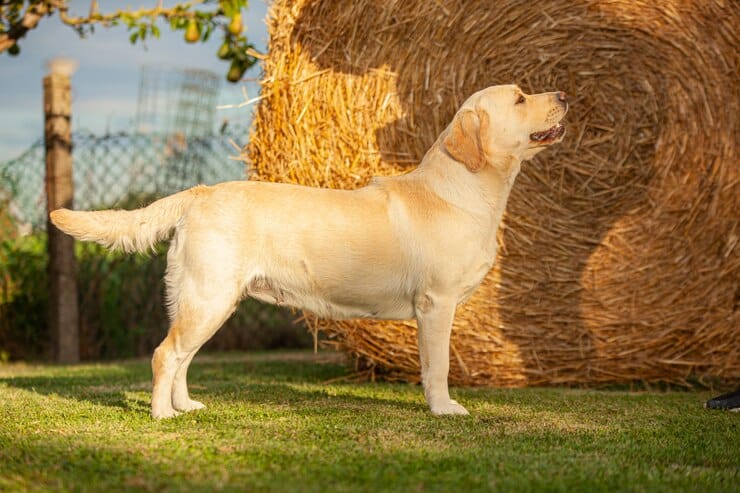
Photo credit: Freepik by pippocarlo
Labrador Fun Facts
Originally, Labrador Retrievers worked alongside fishermen and were bred to bring back fish-laden nets from icy waters, but Labradors have since turned their talented paw to a whole host of dog careers including drug and explosive detection, search and rescue, and even serving as guide dogs for the visually impaired – they’re one of the most popular breeds in both the USA and UK, are excellent swimmers due to their webbed toes, and amazingly, one litter can sometimes contain puppies of all three colours (black, yellow, and chocolate) from the same parents.
From my experience with these remarkable dogs, I’ve learned that the world’s first diabetic alert dog was called Armstrong, and Labs are very popular among royals, with Queen Elizabeth II of England, Queen Silvia of Sweden, and Prince Charles famously owning these loyal companions throughout their lives.
FAQ’S
Are Labradors Good Family Dogs?
There is a good reason why the Labrador Retriever has earned its reputation as being an almost perfect family dog – this is a breed who loves everyone and everything, with their only real drawback being that they need a lot of exercise, so active families who enjoy walking, outdoor games, and regular adventures are ideal matches. From my years working with families and their Labs, I always emphasize that all dogs and children must be taught to get on with and respect each other to be safe together, and even with young Labs who are naturally gentle, they should never be left alone with small children – adults must always supervise interactions between them to ensure everyone stays happy and secure.
2.Are Labradors lazy?
Labradors are known for being highly active and outgoing, but as they get older, they might become prone to becoming lazier.
3.What should I know about a Labrador Retriever?
Labradors simply adore water, so you should be expecting lots of jumping in puddles and getting messy, but also they are easily trained, versatile workers who can be taught to do almost anything from basic obedience to complex working tasks.
4.Are Labradors smart?
In general, Labradors are considered smart dogs – given their breeding as hunters, they possess very heightened instincts and intelligence that make them excellent problem-solvers and quick learners.
5.Do Labradors bark a lot?
The Labrador Retriever breed is not particularly chatty – they will usually keep quiet unless they want to get someone’s attention or feel provoked by something unusual in their environment.


